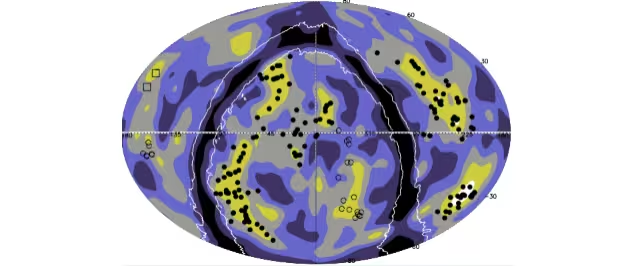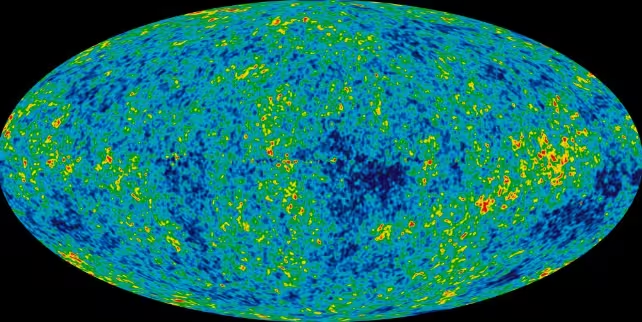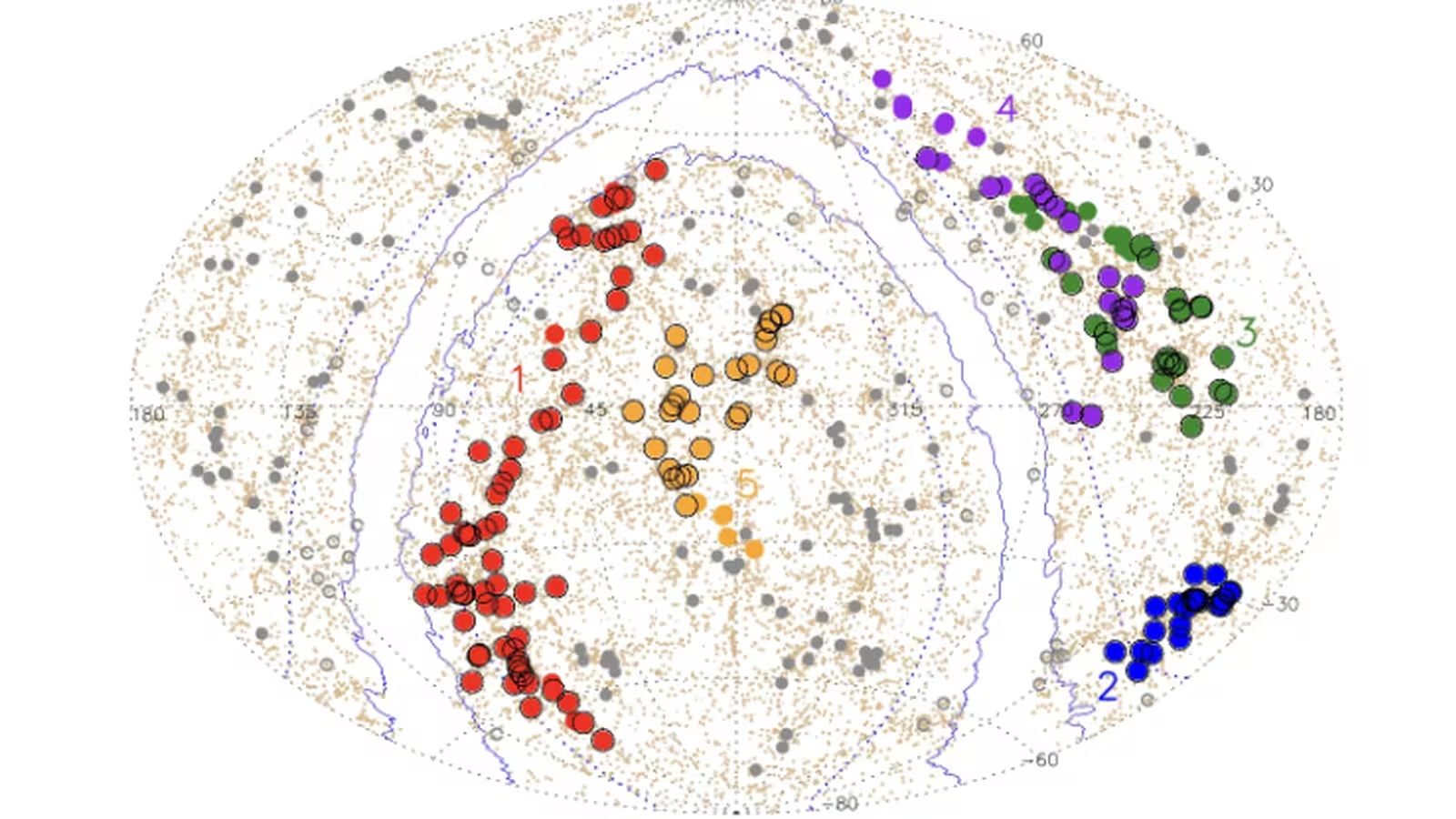6 Minutes
Unveiling Quipu: The Immense Superstructure Redefining Cosmic Scale
In a landmark discovery that reshapes our understanding of the Universe’s largest structures, astronomers have identified Quipu—a cosmic superstructure spanning over 1.3 billion light-years. Named after the intricate Incan system of knotted cords used for record-keeping, Quipu is now recognized as the largest known structure in the cosmos, amassing an astounding 200 quadrillion solar masses. This find not only challenges preconceived notions about the scale of cosmic architecture but also offers critical insights for refining cosmological models and advancing observational astronomy.
The Science Behind Superstructures: Context and Methodology
Cosmic Structures on a Grand Scale
Superstructures, such as Quipu, represent the pinnacle of the Universe’s vast hierarchy. These enormous formations are comprised of interconnected galaxy clusters and superclusters, forming complex webs that stretch across hundreds of millions of parsecs. Superstructures are more than astronomical curiosities; they contain significant fractions of the visible Universe’s matter, including entire galaxies and vast reservoirs of intergalactic gas.
The discovery of Quipu and four other vast formations comes from the Cosmic Large-Scale Structure in X-rays (CLASSIX) Cluster Survey, a project leveraging advanced X-ray observations. By mapping X-ray emissions from massive galaxy clusters—often containing thousands of galaxies and extremely hot intergalactic gas—researchers can trace the densest regions of the cosmic web and piece together the Universe’s grandest skeleton.
"For a precise determination of cosmological parameters, we need to understand the effects of the local large-scale structure of the Universe on the measurements," notes Hans Böhringer of the Max Planck Institute, the study’s lead author. This insight underscores the importance of mapping these colossal cosmic filaments to achieve accurate cosmological measurements.

The Quipu Connection: Name and Structure
Quipu’s memorable name draws inspiration from the knotted cord devices used by the Inca civilization, echoing the visually striking filamentary appearance of the newly discovered superstructure. Just as quipus recorded information with patterns of knots and cords, Quipu—the superstructure—presents as a long, filamentous spine with branching sub-filaments, reminiscent of the knotted geometry of its namesake.
The Far-Reaching Impact of Superstructures on Cosmic Measurements
Influence on the Cosmic Microwave Background (CMB)
Massive superstructures—by virtue of their immense mass and gravitational pull—leave a significant imprint on the Cosmic Microwave Background (CMB), which is the afterglow of the Big Bang and a cornerstone of cosmology. As relic radiation traverses superstructures like Quipu, its path is subtly altered through the Integrated Sachs-Wolfe (ISW) effect, resulting in observable fluctuations. These disturbances play a central role in shaping our understanding of early Universe conditions and must be carefully accounted for in precision cosmology.
Implications for the Hubble Constant and Cosmological Models
Superstructures also influence measurements of the Hubble constant, the parameter that defines the Universe’s rate of expansion. While cosmic expansion causes galaxies to move apart, localized motions within these massive structures ("peculiar velocities" or streaming motions) can distort our measured values. Unless astronomers accurately account for these environmental effects, attempts to refine the Hubble constant may be skewed, complicating efforts to resolve existing scientific debates such as the "Hubble tension."
Moreover, these gargantuan clouds of mass act as gravitational lenses, bending and distorting light from more distant cosmic sources. This lensing not only affects sky images and survey results, but can also introduce systematic errors into measurements of cosmic distances, galaxy distributions, and the distribution of dark matter.
Quipu and Its Place in the Cosmic Web
Recent research, now published in the journal Astronomy & Astrophysics, confirms that Quipu is unrivaled in scale. Quipu and four accompanying superstructures cataloged by Böhringer’s team host 45% of all galaxy clusters, 30% of known galaxies, and about 25% of matter in the studied volume—occupying an impressive 13% of the surveyed Universe.
Delving deeper, the study finds noticeable differences in galaxy density between clusters within superstructures and those isolated in less-dense regions (known as 'field clusters'). This discrepancy may result from the less massive nature of field clusters, rather than from an intrinsic deficiency in galaxy density. Understanding these environments and their influence offers valuable clues to galaxy and cluster formation processes.

Simulations and Theoretical Implications
Encouragingly, state-of-the-art simulations using the Lambda Cold Dark Matter (ΛCDM) model—the prevailing theory for cosmic structure formation—predict the existence of superstructures resembling Quipu, lending theoretical support to observational results. The ΛCDM model incorporates dark energy (Lambda) and cold dark matter to describe the Universe’s evolution since the Big Bang, and the presence of these vast filaments aligns with predictions about the Universe’s large-scale structure.
"We find superstructures with similar properties in simulations based on Lambda-CDM cosmology models," the research team writes, pointing to both the robustness of their discovery and the reliability of current cosmological frameworks.
Looking Ahead: Transience and Future Exploration
While Quipu presently dominates the cosmic landscape, its reign is likely temporary. According to Böhringer and collaborators, such superstructures are not permanent fixtures. Over vast cosmic timescales, gravitational dynamics will cause Quipu and similar filaments to fragment into smaller, denser structures—a process that means today’s largest cosmic entities are fleeting configurations in the Universe’s evolutionary journey.
Nevertheless, the ongoing study of Quipu offers extraordinary opportunities to enhance our understanding of how galaxies evolve within their environments and how large-scale cosmic structures interact with fundamental forces and the fabric of spacetime. "Interesting follow-up research on our findings includes, for example, studies of the influence of these environments on the galaxy population and evolution," the authors emphasize.
Conclusion
The discovery of Quipu—the largest known structure in the Universe—marks a pivotal moment in our quest to map and comprehend the grandest scales of cosmic matter. From its sheer enormity (over 1.3 billion light-years in length) to its profound impact on key cosmological observations such as the CMB and the Hubble constant, Quipu demands a reassessment of everything from galactic evolution to the modeling of the Universe’s vast web of matter and energy. As technology and survey techniques advance, Quipu and its kindred superstructures will remain at the forefront of extragalactic astronomy, guiding new research into the fundamental mysteries of the cosmos and the forces that shape it.



Comments